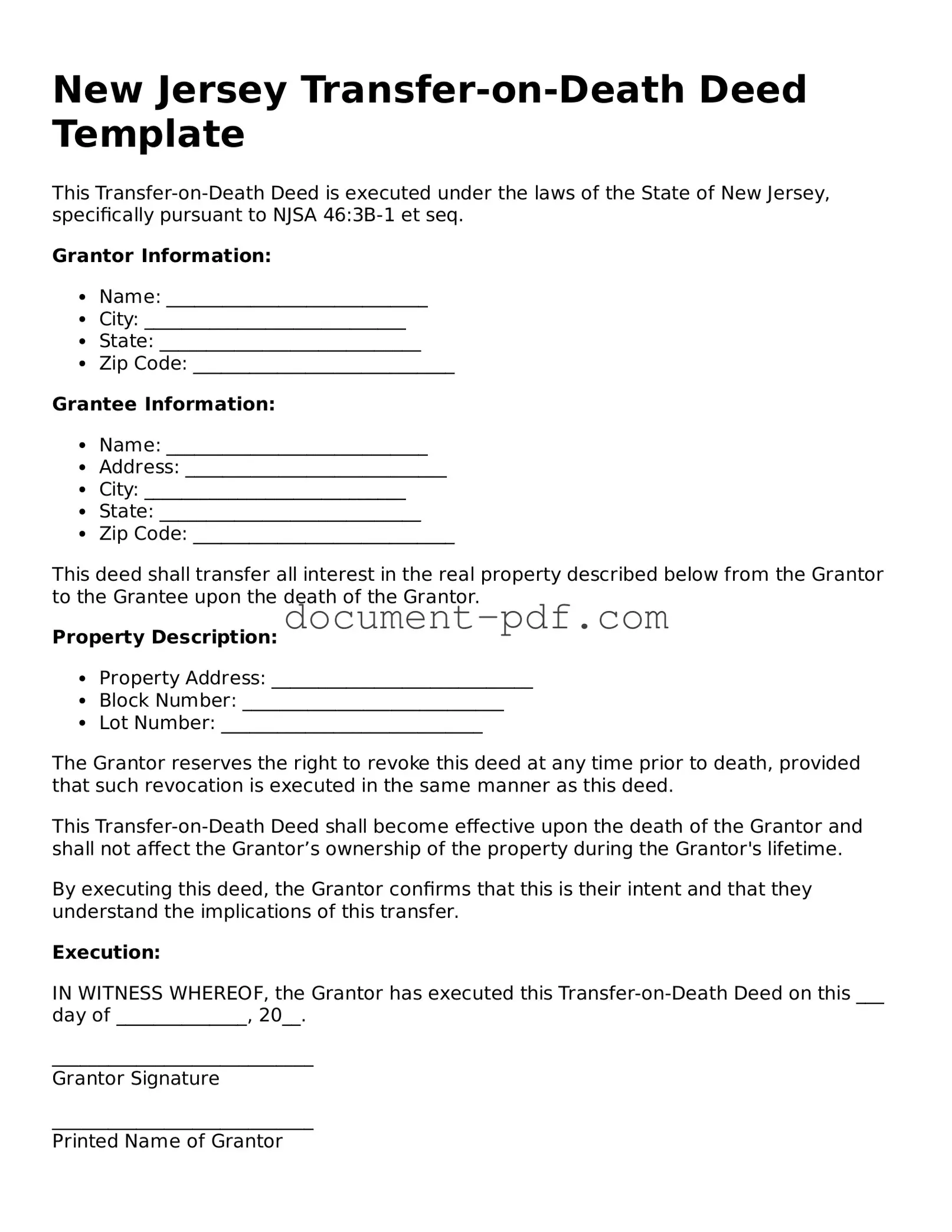New Jersey Transfer-on-Death Deed Template
This Transfer-on-Death Deed is executed under the laws of the State of New Jersey, specifically pursuant to NJSA 46:3B-1 et seq.
Grantor Information:
- Name: ____________________________
- City: ____________________________
- State: ____________________________
- Zip Code: ____________________________
Grantee Information:
- Name: ____________________________
- Address: ____________________________
- City: ____________________________
- State: ____________________________
- Zip Code: ____________________________
This deed shall transfer all interest in the real property described below from the Grantor to the Grantee upon the death of the Grantor.
Property Description:
- Property Address: ____________________________
- Block Number: ____________________________
- Lot Number: ____________________________
The Grantor reserves the right to revoke this deed at any time prior to death, provided that such revocation is executed in the same manner as this deed.
This Transfer-on-Death Deed shall become effective upon the death of the Grantor and shall not affect the Grantor’s ownership of the property during the Grantor's lifetime.
By executing this deed, the Grantor confirms that this is their intent and that they understand the implications of this transfer.
Execution:
IN WITNESS WHEREOF, the Grantor has executed this Transfer-on-Death Deed on this ___ day of ______________, 20__.
____________________________
Grantor Signature
____________________________
Printed Name of Grantor
Notary Public:
State of New Jersey
County of ______________
On this ___ day of ______________, 20__, before me, a Notary Public in and for said State and County, personally appeared ____________________________, known to me to be the person who executed the foregoing Transfer-on-Death Deed, and acknowledged to me that he/she signed the same.
____________________________
Notary Public Signature
My Commission Expires: _______________
